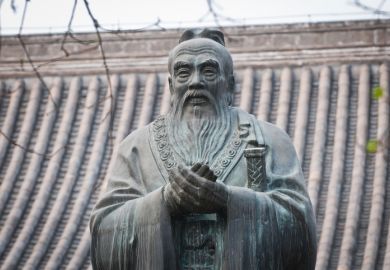In the early 1970s, the publication of Albert Boime's The Academy and French Painting in the Nineteenth Century, Linda Nochlin's Realism and T.J. Clark's investigation of art and politics in France from 1848 to 1851 marked a significant moment in the historiography of 19th-century art.
Clark's persuasive argument, set out in his study of Courbet, for a "history of mediations, for an account of their change and ambiguity" - mediations that he identified as being historically formed and altered and, in the case of each individual artist and artwork, "historically specific" - continues to resonate. Boime has subsequently published monographs on the art of Thomas Couture, the "art of exclusion", American landscape painting 1830-65, the Macchia and the Risorgimento, and the French Commune. Volume 4 of this ambitious, post-Hauserian project, a six-volume Social History of Modern Art, is distilled from these sources, representing circa 40 years of illuminating research.
The series' title seems to promise an encyclopaedic range and to a welcome degree this volume exceeds such a brief: it has an incisiveness and a cohesive direction that edited compendia rarely manage. Here, Boime maps the most significant currents in social-political change as it interfaces with contemporary painting during the period from 1848 to the immediate post-Commune period.
France is presented as the dominant culture with just under half the book devoted to it; the first and final groups of three chapters take us from the heady confusion of the early days of the 1848 revolution through to the early 1870s and the "threshold of Impressionism". Sandwiched in between are meditations on Pre-Raphaelitism (England is used here as elsewhere in the book as a blanket term to denote England, Ireland, Scotland and Wales), "The Macchia and the Risorgimento", "Cultural inflections of slavery and Manifest Destiny in America" and "Biedermeier culture and the Revolutions of 1848".
To an extent, the book embodies the virtue of having a single mind working on the problems of representation embedded within a period of complex political change. This allows for the sustained single-focused exploration of what Boime identifies as his central aim - "to characterise and contextualise the various types of realism on both sides of the ideological divide".
There are also some personal interventions and reflections, vide the coda on Whitman and Courbet. But those who expect a work predominantly of reference may find that its attempt at a synoptic view is too partial and too involved with the author's own qualitative sense of what constitutes "art" and the "modern".
Clearly, he considers only painting as having the power to convey "impetuous action" and contemporaneity through its manipulation of colour. Sculpture (despite its significance as a monumental form in codifying and embodying national, regional and local concerns), as in the preceding volumes, makes only occasional quixotic appearances, notably in the chapter on slavery and civil war in America and Edmonia Lewis's white marble statuary.
Given his otherwise insightful examination of interpretations of slavery, religion and orientalism, it is odd, for example, that Boime does not mention Cordier's government commissions of the 1850s for a series of mixed-media busts of the different peoples of the French African colonies incorporating local stones, nor Marcello's African La Pythonisse exhibited at the 1870 Salon, the bronze installed in Garnier's Opera by 1875.
Boime's book has an obvious pedagogic purpose with much that is richly and clearly presented for the undergraduate, excepting the poor-quality illustrations. But ultimately its methodological terrain reminds me of metamerism in painting conservation: to the conservator retouching under one light source the surface appears seamless, but displayed in the gallery under a different light the differing hues of what appeared to be the same colours during restoration become apparent.
Art in an Age of Civil Struggle, 1848-1871: A Social History of Modern Art, Volume 4
By Albert Boime. University of Chicago Press. 784pp, £34.00. ISBN 9780226063283. Published 23 May 2008



